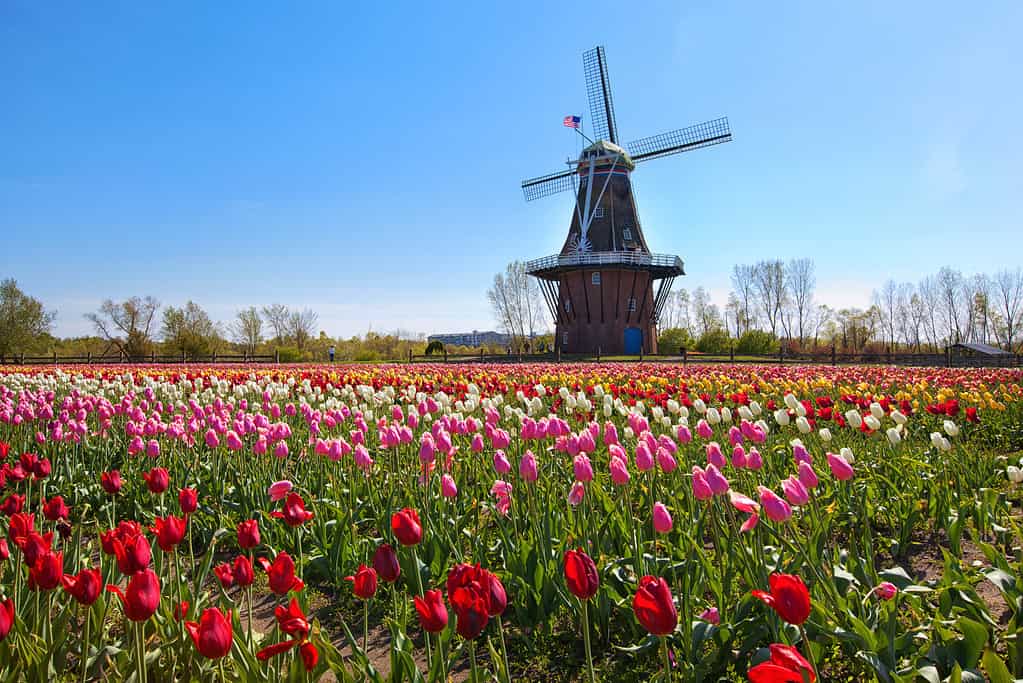Seasons are periods of the year broken up based on the climate and other factors like daylight and sun exposure. The four seasons include winter, spring, summer, and autumn, and each season has its own characteristics and deep symbolism. The most influential factor that determines seasons is the Sun’s intensity in certain regions as the Earth tilts on its axis. That’s why the seasons depend on the hemisphere, with one experiencing summer and the other experiencing winter.
Each season has its own unique, beautiful features that remind us to trust the natural progression of life. Keep reading to learn all about the symbolism of each season — as well as their influence on the natural cycle of life.
Symbolism of Seasons
Seasons symbolize change, the passing of time, growth, and spiritual development. Just as each season has its own light, temperature, and weather patterns, our phases or “seasons” of life each have their own characteristics, too. The changing of seasons merely represents the natural rhythm and flow of life. For instance, after darkness and cold (winter) come warmth and life (spring).
Spiritually speaking, many believe there are seasons for every part of life. There are seasons of grief, seasons of passion, seasons of rest, etc. The seasons remind us to trust each chapter of life as it unfolds. Rather than fighting the natural cadence of your life, simply allow it to pan out as it’s meant to.
Symbolism of the Spring Season
Spring is like a beacon of hope after a long winter. The season promises brighter (as well as longer and warmer) days ahead. Think of this time as a chance to “defrost” or “wake up.” In fact, you’ll notice wildlife coming out of their hibernation or birds returning from their flights south.
Spring symbolizes renewal, fresh starts, rebirth, and hope. As the flowers begin to bloom, the trees begin to bud, and the air begins to warm, we realize that life continues moving forward. This fosters a sense of optimism. You might notice you’re gaining more energy or thinking more positively. It’s never too late to begin again.

Tulips are a gorgeous spring staple.
©csterken/iStock via Getty Images
Symbolism of the Summer Season
Summer is the warmest season with the most sunlight. The days are longer and nights are shorter, vegetation is typically healthy and flourishing, and people are spending more time outdoors. This is an exciting and passionate time of the year.
That being said, summer symbolizes joy, adventure, fulfillment, love, and freedom. With longer and hotter days, as well as more intense sun exposure, humans and wildlife alike tend to have more energy. This is also a common time for vacations, travel, and gatherings — especially outdoors. Summer is a social season, and it often elicits a carefree mindset.

Summertime often means more trips to the beach, hot days in the Sun, and free time with loved ones.
©Sky Cinema/Shutterstock.com
Symbolism of the Autumn Season
During autumn, daylight becomes shorter, and temperatures become cooler. This is the season when crops and fruits are gathered and harvested, and we are reminded to practice gratitude for our blessings. Additionally, autumn is known to boast vibrant leaves and landscapes.
Just as the trees shed their leaves, we shed what no longer serves us. While many believe this season symbolizes mortality, this doesn’t have to mean death in the literal sense. Fall is a positive symbol of closure, ending, and releasing the past. In fact, autumn is often a symbol of maturity and prosperity.

Autumn’s gorgeous foliage is a signature feature of the season.
©ravphotographix/iStock via Getty Images
Symbolism of the Winter Season
Winter is the coldest time of the year, often bringing snow, ice, and freezing temperatures to much of the Northern Hemisphere. Many animals will hibernate or head south during this time, escaping the cold months.
Symbolically, winter represents a time of death, endings, rest, and recovery. This is because some wildlife and vegetation do not survive through long, cold winters. Additionally, the days tend to be shorter during the winter months, with less sunlight. This can cause you to feel more tired and sluggish, as the reduced sunlight can affect your circadian rhythm.
Spiritually speaking, many people view winter as a time to turn inward and find ways to nurture themselves through the seemingly arduous months.

Winter is commonly associated with cold weather and snow.
©Mumemories/iStock via Getty Images
Seasons as Symbols of Nature
All four seasons represent different spiritual meanings and symbolism. Nature’s cycle of vitality follows spring, summer, autumn, and winter, reminding us that no matter how dark or cold life can be, there will always be brighter and warmer days ahead — and vice versa. Life is all about balance and harmony; we can’t have one extreme without the other. Take the time to appreciate each season this year.
Thank you for reading! Have some feedback for us? Contact the AZ Animals editorial team.








